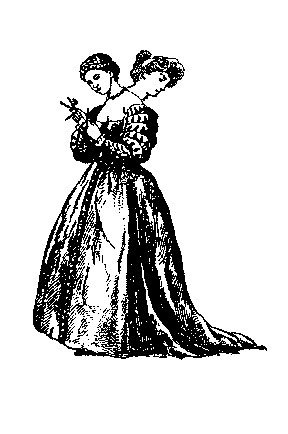P&W: It sounds like her collages are also working in dialectic with your aphorisms.

NP: That's it. That's it. I was thinking about that. The idea that there's another point of view in the book. Not only another point of view in the book on the feelings and ideas expressed in the aphorisms, but also a visual side of experience. They're collages, so they're not to be taken entirely literarily. They all work within themselves and play off the ideas of the aphorisms, but they're also works in themselves, bringing out another facet of experience.
P&W: So they are not illustrations, but literally a different point of view.
NP: They're not literally illustrations, but they're the outcome of her experience of these groups of aphorisms that she draws together…visually. She's incorporating elements that she finds in various places into the collages, so it's an incorporation of the world via visual arts. At the same time, she's very much looking at what she's responding to in the aphorisms themselves.
The other thing I want to mention is that these aphorisms were originally written for my blog, fait accompli. The wonderful thing about blogging is that it's unlike any other literary form in that it's very interactive. People link to them. Now I have a comments section; people comment on them. There's a sense of process there also.
[The aphorisms] were written during a time when I was putting together a book of posts that encompassed the first three months of the blog. What I did was post, every day for a couple of years, selections from my literary journals going back as far as the sixties. I would try to find something in the journals that corresponded to how I felt that day; it could be something from 1985 about how I felt that day in 2003 or 2004. I was looking to create again this interaction between time zones past and present. There's another aspect of relativity or dialectic—trying to get a dialectic between how I viewed things twenty years earlier and how I view things on a particular day. That's what that blog was all about, and while I was putting the book of the blog together I didn’t really have the time to keep posting on the blog. That's how I started writing aphorisms. So I had a briefer form that I could be working with and at the same time stay in touch with the dailyness of the blog.
P&W: You do lots of different things. They evolve over time and yet they are held together by a few central themes. Certainly this question of interaction and conversation and dialectic seems to be a central theme.
NP: Even the collage process has an aspect of this. When I did the collages for Free Fall, these were posters that I took off the walls of Amsterdam, the outside walls of Amsterdam. They were advertising posters that were peeling off. I pulled them down, I collected them, and then I Xeroxed them. And from these Xeroxes, I created a book of over 175 collages from this material. What also interests me about collages is that you're putting different aspects of life together that are disparate, that come from different places. You're working with form and shape and images that are put next to each other to get an effect. It's that overlaying of materials, which is really the process of how time accumulates. So I think that's one of the fascinating things about working with the found materials that I would make my collages from all through the years. It's also a reflection on different times. So that these pieces of advertisement that are on the walls are remaining there and then I'm peeling them down and putting them in this book. And they're reflective of events, these advertisements of events that happened a long time ago. My earliest collages, I would work with material from materials that came from-turn-of-the-century magazines—I'd be interested in bringing material from the present and the past and overlapping these materials to get a sense of interaction between time zones.
We're doing in this interview what I'm talking about here. You got me to talk and also made me think, particularly when you got me to talk, about arriving at understanding through interaction. Here, we're doing it.







